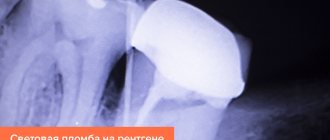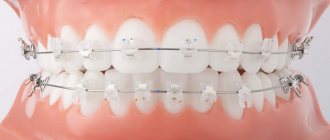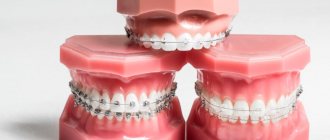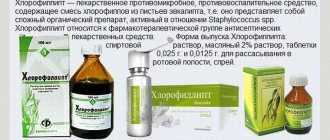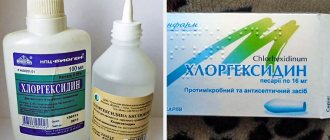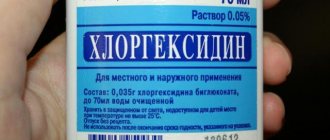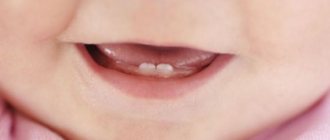Brief description of chlorophyllipt
Chlorophyllipt is a medicinal product obtained from eucalyptus leaf extract and containing chlorophylls of groups A and B. It has antibacterial (especially to the staphylococcal group) and anti-inflammatory effects. Chlorophyllipt is the result of successful research and experiments of two Soviet research institutes as part of the study of plant antibiotics.
Most often it is used:
- Burns.
- Wounds and trophic ulcers.
- Cervical erosions.
- Septic conditions, pneumonia, empyema, abscesses and many others.
Chlorophyllipt is also used for diseases when antibiotic-resistant pathogens occur, but only as part of complex therapy.
The drug is available in alcohol and oil solutions, spray and lozenges. It is used topically: applications, resorption, rinsing and more. Previously, it was widely used in the form of injections, but they gradually moved away from this or are used extremely rarely: the solution must be prepared immediately before use, it cannot be stored, there are peculiarities of administration, it cannot be used until the age of 18, frequent allergic reactions. But with topical use, allergic reactions are rare and can be easily avoided by testing for sensitivity in advance.
Chlorophyllipt
Oil solution with active ingredient – chlorophyllipt. According to the instructions for use, this is an antibacterial agent. A drug similar in effect is Chlorhexidine.
Indications:
- respiratory diseases;
- pathologies of the pelvic organs in women;
- burns;
- dermatitis.
Contraindications include hypersensitivity to the main active ingredients a. Alcohol solution is prohibited for alcoholism. Side effects: rash, itching.
Brief description of chlorhexidine
Chlorhexidine is an antiseptic that is a chlorine preparation and a biguanide derivative. It has a good antimicrobial effect and successfully fights pathogens such as syphilis, chlamydia, HIV, herpes, influenza, nosocomial infections and others. First synthesized in Great Britain in 1950.
Most often it is used:
- Treatment of surgical and injection fields.
- Hand treatment for medical staff.
- Processing of medical instruments for various purposes.
- Prevention of sexually transmitted diseases (STDs).
In addition, chlorhexidine is also used in the treatment of wounds and burns; the umbilical wound is treated in newborns; the bladder is washed before cystoscopy; in dentistry and ENT practice it is successfully used to treat diseases of the oral cavity, throat, and much more.
Available in the form of solutions of various concentrations, suppositories, gel and spray.
What is the best way to gargle?
If a symptom such as a sore throat occurs, symptomatic treatment may be necessary to eliminate it. For this purpose, there are many dosage forms on the pharmaceutical market (lozenges, sprays, lozenges, tablets for preparing rinse solutions). Most often, if there is severe pain in the throat and its redness, as well as the throat is coated with plaque, it will be very effective to use gargling solutions, but what is the best way to gargle?
If we talk about infectious and inflammatory diseases of the oral cavity and pharynx, local antiseptics in the form of rinse solutions would be a good treatment option. These include:
- Furacilin tablets (1 tablet per glass of water, must be dissolved in hot water with a small addition of table salt, allowed to cool, after which you can start gargling);
- Chlorhexidine solution (a 100 ml jar can be diluted in a small amount of water, but you can also not dilute it, but rinse it in its pure form);
- hydrogen peroxide solution 3% (necessarily requires dilution in a 1:1 ratio. This is necessary, since peroxide primarily belongs to the group of oxidizing agents; without dilution it can burn the mucous membranes);
- Miramistin solution, which contains special attachments for ease of use (a ready-made solution that does not need to be diluted; up to 20 ml of solution per use is enough for one rinse).
These products effectively disinfect, wash out pathogenic microflora in the throat cavity and thereby eliminate sore throat, swelling, redness and reduce fever, if any.
To treat a sore throat, local plant-based gargles with antimicrobial action are also suitable:
- Chlorophyllipt (oil or alcohol solution with eucalyptus extract) - dilute it in 1 glass (200-250 ml) of water, add one tablespoon of Chlorophyllipt solution;
- Rotokan (extracts of calendula, yarrow and chamomile) - you do not need to use dilution, since this is a ready-to-use solution, but rinse with no more than 30 ml per day.
Preparations containing natural, herbal ingredients can most often cause allergic reactions due to individual intolerance to the composition of the drug, so when choosing them you should be careful and consult a doctor.
There are also gargles with an anti-inflammatory component, one of these representatives is:
- Oka solution 1.6% (ketoprofen) - 10 ml of it is diluted in a small amount of water in a special measuring cup that comes with it in the package, rinsing is carried out up to 2 times a day.
This drug requires strict prescription from a doctor, since it belongs to the group of non-steroidal anti-inflammatory drugs and has a number of contraindications.
And so, to summarize, we can note the top of the most popular and effective means for gargling for pain and inflammation of the pharynx:
- Furacillin;
- Miramistin;
- Chlorhexedine;
- Chlorophyllipt.
Sources
- Sore throat in general practice. Minimizing diagnosis—preventing superfluous use of antibiotics / NIH (English)
- Sore throat treatment / NIH
Common features of the drugs
- Chlorophyllipt and chlorhexidine are not used independently, only in complex therapy. They act as assistants who can enhance the effect of drugs already used and further enhance the treatment with their properties. And chlorophyllipt itself can enhance the antimicrobial effect of chlorhexidine.
- Patients and medical staff may experience hypersensitivity to both one and the second drug.
- Chlorophyllipt and chlorhexidine are unique in their application, their release forms are very diverse and they can be used in various branches of medicine: dentistry, cosmetology, gynecology, urology, otolaryngology, dermatology, emergency medicine and others.
- These drugs are available in almost any pharmacy and are economically affordable for any category of people.
Taking drugs together
Due to the fact that the antiseptics discussed in this review have slightly different effects, very often patients take Chlorhexidine together with Chlorophyllipt, mixing both drugs.
In fact, the simultaneous use of these drugs has no compelling contraindications, with the exception of individual hypersensitivity to the active components. Of course, the attending physician will not prescribe using Chlorophyllipt and Chlorhexidine for rinsing simultaneously, but in practice this combination can speed up the process of destroying infectious microorganisms and the onset of recovery.
When faced with choosing a specific antiseptic drug for gargling in a child, the choice should be Chlorophyllipt. This is due to the fact that during the procedure the child may accidentally swallow the antiseptic solution.
Chlorophyllipt is not dangerous if accidentally swallowed , and nothing will have to be done in this case. But, if a child accidentally swallows a Chlorhexidine solution, this can lead to intoxication of the child’s body. Therefore, during the first two minutes, it is urgent to rinse the stomach with a large amount of warm water, and then give the baby activated carbon tablets in the ratio of 1 tablet per 10 kilograms of body weight.
Differences between drugs
- Chlorophyllipt is a herbal preparation, and chlorhexidine is a result of the chemical industry.
- Chlorhexidine has a prolonged action: if it is not washed off from the applied surface, it will continue to act.
- Chlorophyllipt can be used both externally and internally. chlorhexidine - only externally, for rinsing cavities and canals. In addition, chlorhexidine can be used as an antiseptic for environmental items: drains, surgical instruments and even clothing.
- The number of side effects also varies: chlorophyllipt can only cause an allergic reaction. chlorhexedine - an allergic reaction, dermatitis, burns of the mucous membrane; with prolonged rinsing of the mouth, the taste sensation and color of the tooth enamel may change.
What is the difference between the drugs
Both drugs are antiseptics, but are not analogues. Miramistin has a greater spectrum of action than Chlorophyllipt. Their similarity is that drugs are prescribed for the treatment of ENT diseases, pathologies of the upper and lower respiratory tract.
For the treatment of viral, bacterial, fungal pathologies, it is better to give preference to Miramistin . Because it can stop the growth and reproduction of pathogenic microorganisms, it is therefore a stronger and more effective medicine. Chlorophyllipt still refers more to disinfectants and cleansers. This is the difference between the medications.
Features of the use of chlorophyllipt
The use of the drug in each clinical case is considered individually. Chlorophyllipt primarily acts as a natural antibiotic . If, when identifying pathogens, the staphylococcal group was isolated, then in addition to antibiotics, chlorophyllipt can be added. Although using only these types of pathogens is not entirely correct. Due to its bactericidal and bacteriostatic effects, it can be used in a wide range.
Promotes a speedy recovery from various burns , trophic ulcers (especially on the extremities), and erosions of the mucous membranes. For septic conditions, empyema and abscesses, oral administration is possible.
When treating wounds with chlorophyllipt, you should avoid its interaction with other drugs (it may increase side effects). And if there are residual traces of hydrogen peroxide in the wound, then chlorophyllipt will precipitate and there will be no therapeutic effect.
Before using the drug, it is necessary to test the patient for sensitivity to avoid an allergic reaction. The safest way is to apply a little alcohol solution to the inner surface of the wrist and observe for half an hour. If there is no redness, itching, or burning, then the drug is safe for use.
Contraindicated for use by pregnant women, nursing mothers and children under 18 years of age. But some pediatricians prescribe an oil solution of chlorophyllipt (for example, for a cough or sore throat) and achieve a good therapeutic effect.
Miramistin
Antiseptic with a wide spectrum of action. Has antiviral and bactericidal effects.
Areas of application:
- surgery;
- gynecology;
- dentistry;
- traumatology.
A non-toxic drug with virtually no contraindications. In addition to individual intolerance to the main active ingredient - miramistin. It is allowed to use for treating wounds and gargling during pregnancy and breastfeeding.
Indications:
- treatment of purulent sutures in surgery and obstetrics;
- treatment of burns;
- treatment and prevention of inflammatory pathologies in women;
- treatment of vein pathologies (syphilis, gonorrhea, trichomoniasis, chlamydia, genital herpes);
- treatment of periodontitis, stomatitis;
- treatment of ENT inflammations, tonsillitis, sore throat.
Side effects included itching and burning at the treatment sites. There are no side effects when gargling. Not recommended for use with antibiotics.
Features of the use of chlorhexidine
Chlorhexidine is widely used in medicine as an antiseptic and disinfectant . It all depends on concentration. As a disinfectant, it is widely used in surgery to treat surgical fields, the hands of medical staff, equipment used in surgery, and the treatment of postoperative and burn wounds. It can impregnate clothes, napkins, and catheters. In gynecology, it is used for treatment before and after procedures, for the treatment of colpitis, ulcers, candidiasis, vaginitis, and STDs.
A weakly concentrated aqueous solution can be used in the form of douching and wiping after unprotected sexual intercourse. Used in otolaryngology, dentistry and urology for washing, wiping, rinsing for various diseases (gingivitis, stomatitis, tonsillitis, tonsillitis, cystitis and others).
In addition to medicine, it is widely used in everyday life to disinfect hands, household items, minor wounds, cracks and much more. Due to its properties, chlorhexidine does not cause resistance in microorganisms, but antibiotic resistance may occur in some cases.
Prohibited for frequent or continuous use due to the risk of side effects. Use with caution in pregnant women, nursing women and small children. Cannot be used with iodine preparations, and ethanol enhances the effect of chlorhexidine.
